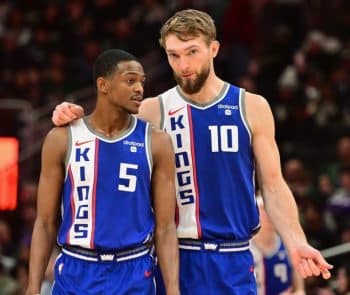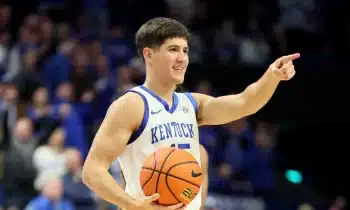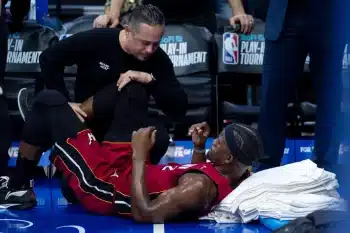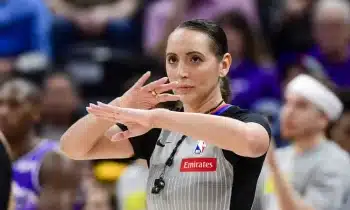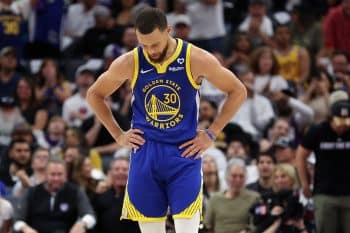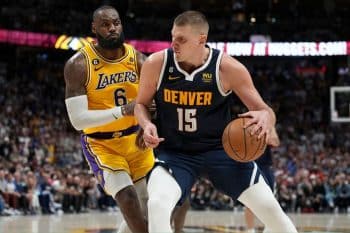NBA
NBA AM: Jamal Crawford – A Case Study

Jamal Crawford – A Case Study: In 2012, Jamal Crawford opted out of the final year of his contract with the Portland Trail Blazers hoping to secure a market value long-term deal. At the time, the expectation was that Crawford had played himself into the $8-$10 million per year range, however the market wasn’t nearly as kind to Crawford as expected. Ultimately, Crawford settled into a four-year, $25 million deal with the Los Angeles Clippers.
Crawford becomes an interesting case study on taking money now, or waiting for money later.
Crawford is slated to earn $5.675 million this season. To put that into perspective, the mid-level salary cap exception is $5.464 million. To further illustrate that number’s value, consider that new Milwaukee Bucks guard Greivis Vasquez is set to earn $6.6 million and new Detroit Pistons center Aron Baynes is set to earn $6.5 million next season.
This is where things get sticky. Players often covet the long-term security of guaranteed NBA contracts; however, in a rising salary cap world, guys like Crawford find themselves locked into contracts that are no longer reflective of their market value and there is very little their respective team can do about it.
The Clippers could tack on more years in an extension, but those new years would be based on the current salary and with the Clippers being a tax team, there is little incentive for them to do anything more than let Crawford play out his deal.
Much has been made about Crawford’s recent comments on social media. He was recently asked about being a free agents and his response was “I wish…” and while it’s easy to frame that as Crawford wanting out from the Clippers, it may be more about the frustration of where his contract value is at compared to what the market would pay him.
At $5.675 million, Crawford is also incredibly value as a trade chip, which further complicates the situation and the public narrative. Crawford as a player, especially from the bench, is worth far more than his salary, hence his frustration and why his name is mentioned so frequently in trade rumors. This too is the problem with signing a long-term deal – eventually you can become a very attractive asset when the economics change.
There is something to be said about knowing your future is secured, and that’s a very hard thing to risk especially as you get older as a player. But the reality of the situation is that signing a long-term deal removes you from free agency and seeing how much money is flowing to other players often isn’t easy for other players to swallow. When you see things on Twitter, keep in mind it’s not always about wanting a change, sometimes it’s about missing your window.
The Realities Of Sports: I want to share a little accepted fact about sports, specifically the NBA: It’s a business.
I know, that’s hard to believe, but at the end of the day – like every business – there is money that comes in the door and money that goes out the door. And, in the end, some business make more cash than others.
This is true in all of sports – what’s different is the number of zeroes in the equation.
Sports teams have owners, or at least face guys that we call owners, but the truth is that while virtually every team in pro sports may have a primary backer, they have usually lowered their own risk with minority investors. Teams are almost never owned as a personal asset, rather they are corporations or limited liability constructs designed to allow several people to put money on the table.
This becomes important on a number of fronts. The biggest being that it is nearly impossible for an owner to simply dig into his pocket and spend more of his own cash. It’s a popular narrative to say Dallas’ Mark Cuban “is a billionaire, he’ll just pay it.” The truth is Cuban has partners and digging into his own pocket becomes complicated. What usually happens is teams either reallocate money internally (cutting cost on one side to meet the cash needs on another) or they take on a little debt in one year and offset it with profits in another year.
This becomes material when talking about Luxury Tax and how some teams have managed it.
For the most part, the Collective Bargaining Agreement, specifically the salary cap, is designed so that if you stay at or near the cap a team should turn a profit. For most teams, if they stay under the Luxury Tax, they should turn a profit for all but the smallest of markets.
The teams that pay tax are likely just at the profit line or are losing money.
This is important to understand in the grand scheme of a partnership.
For years the Chicago Bulls have carried the label of being “cheap,” mainly because they have traded away key players that could have helped the team in the postseason to avoid paying tax. This is confounding because Chicago is a major market and does very well financially. So this isn’t the case of not being able to afford it, the revenue is there.
What often gets overlooked about the Bulls is the elaborate ownership structure in place in Chicago. Jerry Reinsdorf is the chairman and primary decision maker, but his group of investors includes more than 29 people owning various shares, so it’s not just as simple as Reinsdorf paying the bill. Like most businesses, the Bulls operate on a defined budget and every year that budget gets evaluated and adjusted based on needs.
It’s easy to toss around the “cheap” label, especially when other ownership groups will pay more and more money to compete while teams like Chicago cut costs that may have cost them talent or more importantly wins. However, that’s not always accurate.
The problem in calling a team that spends $70-$80 million a year cheap is simply one of perception. Because others are doing it, the Bulls should do it, but what’s left out of the commentary is the why. There is no question that Reinsdorf in his history as an owner in professional sports has avoided cost whenever possible, but some of that may be related to how his ownership groups are constructed. Will his supporting owners allow the team to spend more than the budget? Is there a defined expectation of profit for the other owners? All of this is a factor that gets left out of the “their just cheap” narrative.
The beauty of sports and sports teams is they reach fans on a very visceral and passionate level. Fans want to win at all costs and have an expectation that their team’s owners share that same mindset. The problem is that sports is a very expensive business and while some teams may take a “whatever it takes” approach, the truth is there are still dollars to be collected and it’s fairly hard for most ownership groups to spend without regards to profit.
Some teams are constructed better than others, and some ownership groups care more about winning than their chunk of the profits, but when you look at some of the non-business decisions that get made, keep in mind it’s not always in the owner’s control and there are a lot more moving parts to a team than just the guys you see in a jersey on the floor.
More Twitter: Make sure you are following all of our guys on Twitter to ensure you are getting the very latest from our team: @stevekylerNBA, @AlexKennedyNBA, @LangGreene, @EricPincus, @joelbrigham, @SusanBible @TommyBeer, @JabariDavisNBA , @MokeHamilton , @JCameratoNBA, @iamdpick, @jblancartenba and @CodyTaylorNBA .
